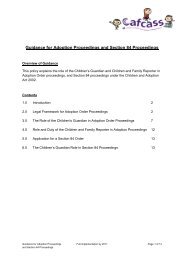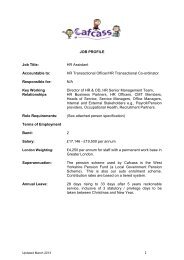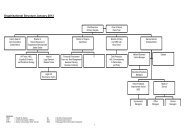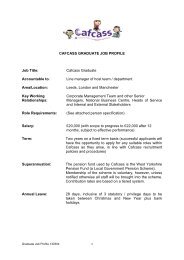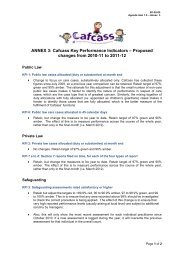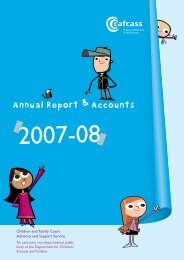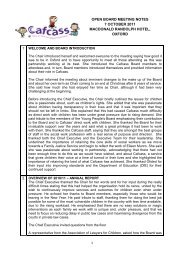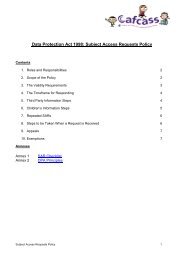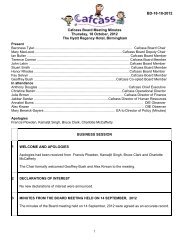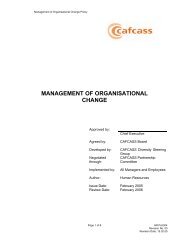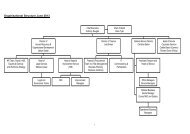Annual Report 2006-2007 - Cafcass
Annual Report 2006-2007 - Cafcass
Annual Report 2006-2007 - Cafcass
You also want an ePaper? Increase the reach of your titles
YUMPU automatically turns print PDFs into web optimized ePapers that Google loves.
case study<br />
<strong>Cafcass</strong> Legal and the High Court team: Baby A and Baby B<br />
A British Asian couple had entered into a surrogacy agreement with the assistance of an agency that introduces<br />
potential surrogate mothers to couples who are seeking to become parents. The surrogate mother was a white,<br />
single woman, who was implanted with two eggs from the commissioning woman, fertilised with the sperm of the<br />
commissioning man. At an early stage in the pregnancy, however, the surrogate mother changed her mind about<br />
handing the twin babies over to their genetic parents. The case reached the High Court and involved a Guardian and<br />
a <strong>Cafcass</strong> lawyer.<br />
The commissioning couple was not told of the babies’ date of birth or the names they had been given, but they<br />
applied to the court for a residence order. Under the Human Fertilisation and Embryology Act, a surrogate<br />
mother is automatically the “mother” of the babies for all legal purposes, even though she has no genetic link<br />
with them, and a commissioning man whose sperm has fertilised the egg is automatically the legal “father”. The<br />
commissioning father and his wife asked the court to give them the two new born babies and remove them from the<br />
surrogate mother. Two expert witnesses were instructed to assist the court with the cultural issues surrounding<br />
these children, who were of Asian origin but with a white mother, and to assess the impact on them of the<br />
circumstances of their birth.<br />
The Guardian carried out a very delicate exercise in completing her enquiries, as all three parties were very<br />
emotionally involved. The Guardian’s conclusion, supported by the experts’ advice, was that the twins should reside<br />
with their genetic parents. The case came before a High Court judge. As a dramatic conclusion, on the second day<br />
of the hearing the surrogate mother decided to give up the children and not seek to maintain any contact with them.<br />
The two babies were delivered to the home of the commissioning couple within a few hours.<br />
Section 1: Management Commentary | 11



